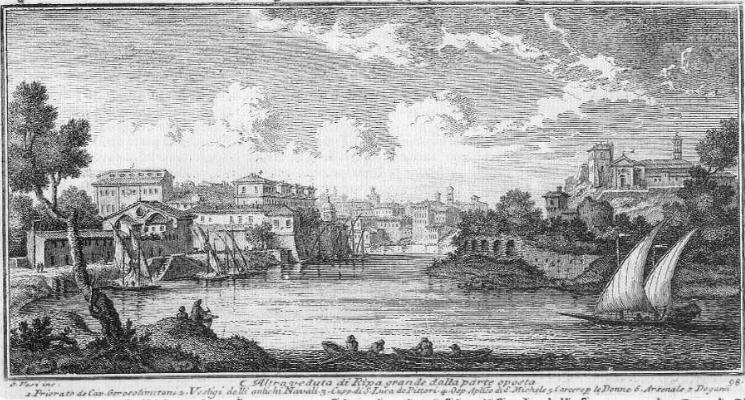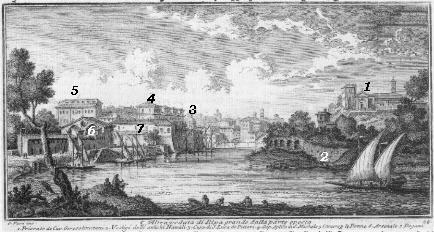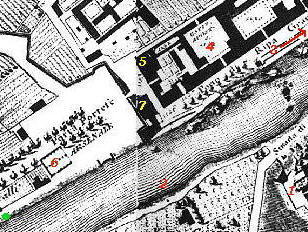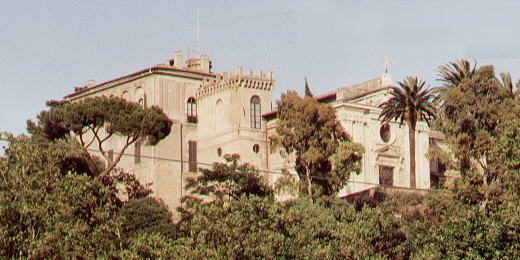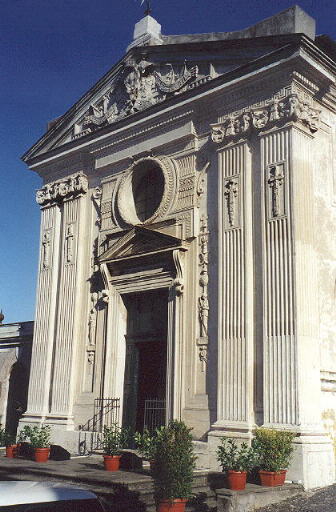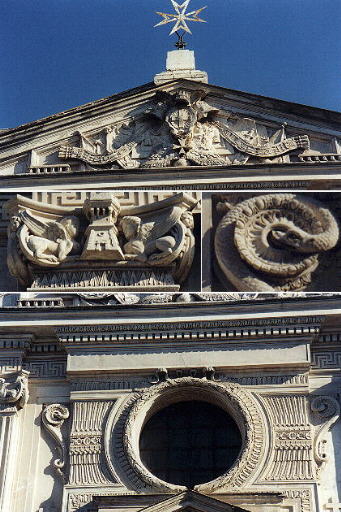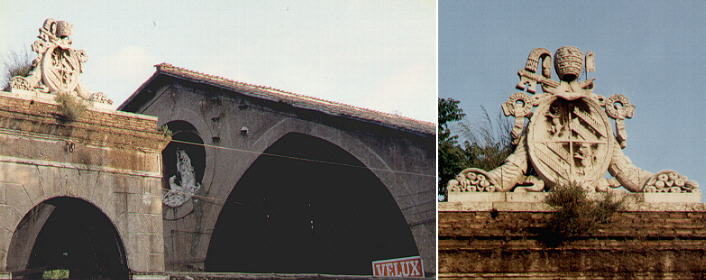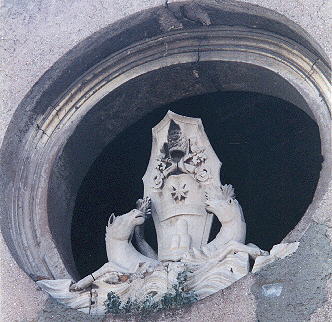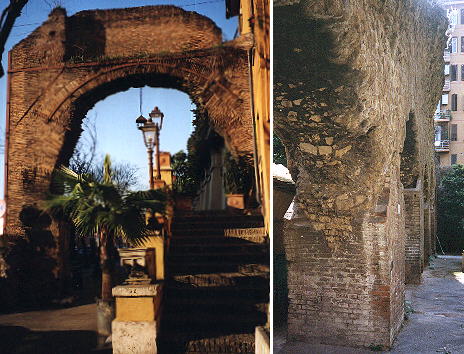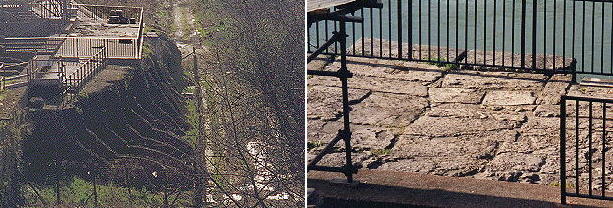  Ripa Grande (seen from South) (Book 5) (Map C3) (Day 5 and Day 6) (View C11) (Rione Ripa) and (Rione Trastevere)
In this page:
Giuseppe Vasi looks back to represent again Ripa Grande, but his main objective is the residence of the Grand Masters of the Knights of Jerusalem (who after the fall of Jerusalem were called Knights of Rhodes and after the fall of Rhodes, Knights of Malta) on the southern top of the Aventine. Still on the right side he shows what is left of the "Antichi Navali" by this meaning the old Roman harbour on the Tiber. On the left side outside the walls Vasi represents the Arsenal built by Clemens XI. The view is taken from the green dot in the small 1748 map here below. In the description below the plate Vasi made reference to: 1) Priorato dei Cavalieri Gerosolimitani (Knights of Jerusalem); 2) Ruins of the Roman harbour; 3) Dome of S. Luca; 4) Ospizio di S. Michele; 5) Women's jail; 6) Arsenal; 7) Custom-house. 3), 4), 5) and 7) are shown in detail in other pages.
The expansion to the south along the river does not allow any more the same expanded view of the plate. Also Vasi took some liberty in realigning the elements of his plate in a much closer way (in particular the dome of S. Luca, which in reality is very far from Ripa Grande). But the view over the Maltese Order buildings is pretty much the same. Santa Maria del Priorato
The church one can see in the plate was remodelled a few years
after Vasi's etching, by Piranesi in 1765, for the Grand Prior Cardinal Giovanni Battista Rezzonico at the
time of Pope Clemens XIII (Carlo Rezzonico). It is the only church by Piranesi and it is a church of its own,
different from all other churches in Rome. Piranesi covered the church façade with an extensive and bizarre decoration. While anticipating some rigidity of neoclassical architecture the richness of the decoration shows traces of the Roman Baroque tradition. The tower on the capital is a tribute to the coat of arms of both Cardinal and Pope Rezzonico.
The strange gothic arch can barely be seen today as the building is a
private property used by a small business.
On the entrance the coat of arms of Pius IX indicates a
restoration in the XIXth century, but what is surprisingly well preserved is the very unusual coat of arms of Clemens XI
which hints at the use of the building (in Italian arsenale means not only arsenal, but also shipyard). Arco di S. Lazzaro
At the foot of the Aventine an arch of the horrea
(the warehouses of Testaccio where
commodities were stored) is called Arco di S. Lazzaro after a little church dedicated to that saint which until the XIXth century was near it. Other remains of the horrea can be found in the courtyards of some apartment blocks in modern Testaccio.
In the XVIIIth century the ruins of the Roman docks along the Tiber were
still clearly visible. Pius IX promoted their excavation
(a fountain in Lungotevere Testaccio celebrates this initiative).
The quaying of the river around Testaccio stopped the excavations
which were resumed very recently. They led to a better understanding
of how the Romans managed the handling of the enormous amount of
commodities arriving here from the provinces.
Next plate in Book 5: Veduta delle antiche Mura di Roma Next step in Day 5 itinerary: Veduta delle antiche Mura di Roma Next step in Day 6 itinerary: Chiesa di S. Francesco a Ripa Next step in your tour of Rione Ripa: Rovine del Ponte Sublicio  or to Book 5 or to
The Coats of Arms of the Popes or
to My Home Page on Baroque Rome or to
My Home Page on Rome in the footsteps of an XVIIIth century traveller or to Book 5 or to
The Coats of Arms of the Popes or
to My Home Page on Baroque Rome or to
My Home Page on Rome in the footsteps of an XVIIIth century traveller
|
All images © 1999 - 2003 by Roberto Piperno. Write to romapip@quipo.it
